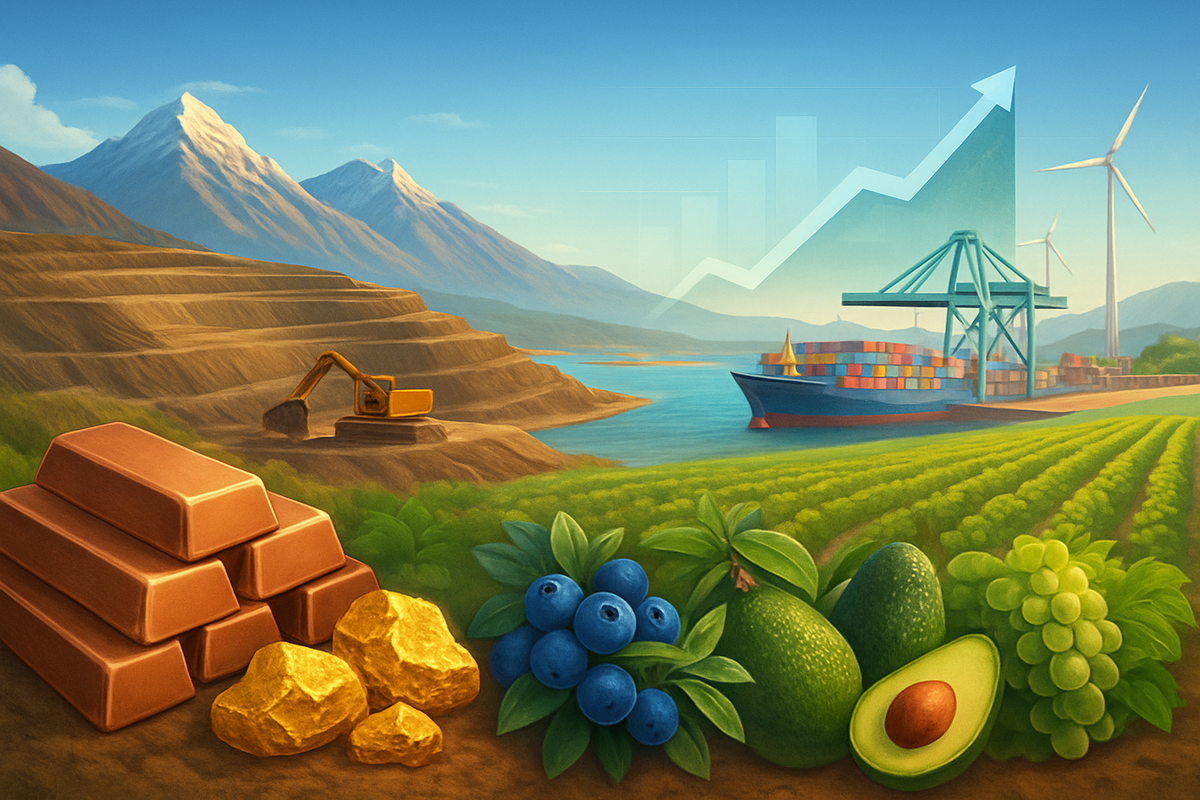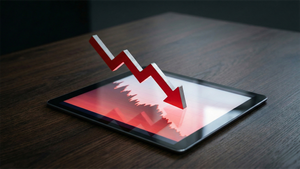
Lima, Peru – November 20, 2025 – Peru is experiencing a significant surge in private investment, with projections indicating a robust growth of over 9% in 2025. This dynamic capital inflow is poised to have immediate and substantial implications for the nation's vital commodity production sector, particularly mining and agriculture, reinforcing Peru's position as a key global supplier of essential resources.
The Central Reserve Bank (BCR) of Peru reported a notable 9% growth in private investment during the first half of 2025, with expectations for a similar or even higher rate in the third quarter. This optimistic outlook is further supported by Peruvian business leaders, who project private investment to exceed $50 billion in 2026, reaching an all-time high. This economic dynamism is attributed to factors such as high consumer confidence, employment recovery, rising wages, and a favorable external environment characterized by strong commodity prices, particularly for minerals.
Unpacking Peru's Investment Boom: Details, Drivers, and Reactions
Peru's projected private investment growth is a multi-faceted phenomenon, driven by strategic government initiatives, a stable macroeconomic framework, and an ambitious pipeline of projects across key sectors. The Ministry of Economy and Finance (MEF) aims to attract $16 billion in private investments between 2025 and 2026, targeting $8 billion in each year through projects facilitated by the Private Investment Promotion Agency (ProInversión). ProInversión itself plans to attract approximately $10 billion in private investment by July 2026 through Public-Private Partnership (PPP) projects and asset-based initiatives.
The positive outlook for 2025-2026 follows a period of significant recovery and strategic planning. After a GDP contraction in 2023, Peru's economy rebounded strongly in 2024, growing by over 3%. This recovery was bolstered by increased public investment and enhanced investor confidence, culminating in ProInversión awarding projects worth $9 billion by the end of 2024. In late 2024 and early 2025, ProInversión unveiled its 2025-2026 PPP portfolio, featuring 102 projects across seven key sectors valued at approximately $41 billion, with an additional $19 billion in projects under structuring. As of November 20, 2025, pension fund withdrawals are commencing, expected to provide a temporary boost to private consumption into the first half of 2026.
Key players driving this investment surge include governmental bodies such as the MEF, BCRP, and ProInversión, which are instrumental in setting economic policy and facilitating investments. The private sector, comprising both domestic and international investors, is actively planning expansions in mining, infrastructure, energy, and agriculture. International entities like the World Bank and OECD provide economic forecasts and recommendations, while credit rating agencies maintain Peru's investment-grade rating, despite political volatility. Major projects underpinning this growth include the China-backed Chancay deepwater port ($3.5 billion), various Lima Metro lines, the Peripheral Ring Road, and significant mining projects like Yanacocha Sulfides ($2.5 billion) and Michiquillay ($2.5 billion).
Initial market and industry reactions are cautiously optimistic. Business leaders express confidence in Peru's macroeconomic stability, controlled inflation, and low public debt. Foreign capital continues to flow, drawn by the stable legal framework and transparent investment regulations. Companies across various sectors are anticipating stronger terms of trade for Peru, fueled by rising mineral prices. However, this optimism is tempered by the recognition of ongoing political risks, particularly the fragmented political party system, frequent changes in government ministers, and the upcoming 2026 presidential and legislative elections, which could introduce caution and delay reforms. Issues like corruption, social conflict, illegal mining, and potential global trade tensions also remain significant concerns for investors.
Corporate Fortunes: Winners and Losers in Peru's Commodity Landscape
The projected private investment growth in Peru's commodity sector presents a bifurcated landscape for public companies, creating significant opportunities for some while posing challenges for others.
In the mining sector, major copper and gold producers are poised to be the primary beneficiaries. Companies with substantial operations or investments in key projects, such as Sociedad Minera Cerro Verde S.A.A. (NYSE: CVERDE), Minsur S.A. (BVL: MINSURI1), Shougang Hierro Peru S.A.A. (BVL: SHOULGC1), Compañía Minera Poderosa S.A. (BVL: CMPODEC1), and Nexa Resources Peru S.A.A. (BVL: NEXAREC1), stand to gain from increased output and favorable commodity prices. The influx of capital into projects like Yanacocha Sulfides and Michiquillay signals a bullish future for their respective operators and partners. Furthermore, mining services and equipment providers, like AESA (BVL: AESA), will likely see boosted demand due to increased activity. Conversely, companies with operations susceptible to social conflicts, such as MMG's Las Bambas (HKEX: 1208) and Glencore's Antapaccay operation (LSE: GLEN), may continue to face disruptions and production losses. Less efficient or smaller-scale operations that struggle to meet evolving regulatory and environmental standards could also be at a disadvantage.
The agricultural sector is also set for a transformative phase. Agro-exporters of high-value crops, particularly blueberries, table grapes, and avocados, are expected to thrive. Companies like Camposol (NYSE: CSOL) and other prominent players in cultivation and export are well-positioned for continued growth, especially with projections for blueberries and avocados to lead agricultural exports in 2025. Public companies in the agro-industrial sector such as Agroindustrias San Jacinto S.A.A. (BVL: SANCAC1), Agroindustrial Laredo S.A.A. (BVL: LAREDOC1), Cartavio S.A.A. (BVL: CARTAVC1), and Casa Grande S.A.A. (BVL: CASAGRC1) could benefit from tax incentives and large-scale irrigation projects like Chavimochic Stage III. Food processing and manufacturing companies like Alicorp S.A.A. (BVL: ALICORC1) could also see increased profitability from greater agricultural output. However, small-scale producers and less capitalized firms may struggle to compete with larger, more efficient players, despite proposed tax breaks, if they cannot access the necessary capital for technological adoption and expansion. Companies with limited export focus or those in regions without significant irrigation upgrades may also miss out on the full benefits of the investment drive.
Across both sectors, political uncertainty leading up to the 2026 elections remains a cross-cutting factor, potentially influencing long-term investment decisions. Global commodity prices will continue to dictate revenues, while improved infrastructure, such as the new Chancay deepwater port, will offer a competitive edge to companies strategically utilizing enhanced logistics.
Wider Significance: Global Trends and Historical Echoes
Peru's projected private investment growth in its commodity sector is not an isolated event but rather a significant development that resonates with broader global industry trends, particularly the accelerating energy transition. The substantial capital inflow, predominantly into copper and gold mining, aligns with a robust bullish outlook for these metals. Global copper demand is projected to increase significantly by 2040, fueled by electric vehicles, renewable energy infrastructure, and data centers. This demand is juxtaposed against persistent global supply constraints, creating a projected copper deficit in 2025 and beyond, which has led to record copper price forecasts. Gold prices have also seen an upward trend, reaching all-time highs in 2025. As the world's third-largest copper producer, Peru is exceptionally well-positioned to capitalize on these trends, with copper projects accounting for 73% of new planned mining investments.
The ripple effects of this investment surge will be felt regionally and globally. Increased copper production from Peru could intensify competition with other major producers like Chile and the Democratic Republic of Congo, though robust global demand suggests additional output will be readily absorbed. Key trading partners, especially China, a primary destination for Peruvian mineral exports, stand to benefit from increased supply and strengthened trade relationships. However, potential trade protectionist policies, such as those proposed by the US President-elect, could disrupt global trade flows and necessitate strategic shifts in Peru's export focus.
From a regulatory and policy perspective, the Peruvian government is actively working to foster an attractive investment climate. Initiatives include offering "legal or tax stability agreements" for large investments, streamlining bureaucratic procedures through a "deregulatory shock," and extending tax incentives for renewable energy projects. A significant challenge remains the pervasive issue of informal and illegal mining, which accounts for a substantial portion of gold exports. Despite government efforts to formalize small-scale miners, the socio-political complexities are evident in recent congressional approvals extending temporary permits for informal miners through 2027. The upcoming 2026 presidential elections also introduce political uncertainty, with the potential for gridlock that could delay crucial reforms.
Historically, Peru has experienced cycles of commodity booms and busts. The 19th-century "Guano Boom" serves as a cautionary tale of over-reliance on a single commodity. More recently, the commodity supercycle from 2003 to 2013, driven by high copper and gold prices, led to significant economic growth and poverty reduction, but also increased dependence on natural resource extraction. The current investment growth presents an opportunity to leverage existing strengths in mining while emphasizing the need for diversification and sound economic policies to achieve a more sustainable and inclusive growth trajectory, learning from past experiences to avoid a mere boom-and-bust cycle.
What Comes Next: Charting Peru's Commodity Future
The future of Peru's commodity sector, invigorated by projected private investment, points towards a trajectory of expansion and strategic diversification, particularly in minerals critical for the green energy transition and sustained growth in agricultural exports.
In the short term (2025-2026), the mining sector is expected to see a robust rebound, with copper production forecast to grow, driven by projects like China Minmetals' Las Bambas mine. Mining investments are anticipated to reach $4.8 billion in 2025. The agro-export sector is also set for a boom, projected to exceed $14 billion in 2025, led by blueberries, avocados, and table grapes, with significant investment in agricultural PPPs potentially doubling export-oriented farmland. A notable emerging development is the approval of the "Horizonte de Verano" Green Hydrogen Production Plant project in Arequipa, with an estimated investment exceeding $11.2 billion, aiming for construction to begin in 2027.
Looking at the long term (beyond 2026), sustained mining growth is expected with major copper projects like Southern Copper's (NYSE: SCCO) Tía María, Michiquillay, and Los Chancas coming online, significantly boosting annual production. Peru is also actively positioning itself as an emerging player in the global lithium market, with American Lithium's Falchani project representing the 6th largest hard-rock lithium deposit globally, aiming for production after 2028. This signals a strategic move to diversify beyond traditional metals into critical battery minerals. Furthermore, Peru envisions becoming a competitive global exporter of green hydrogen, with potential investments exceeding $12.5 billion by 2040. Continued agricultural diversification into organic and sustainable value chains, coupled with enhanced trade efficiency through the new Chancay megaport, will further solidify Peru's long-term export capabilities.
To capitalize on these possibilities, strategic pivots and adaptations are crucial. Peru must move beyond simply exporting raw materials towards value-added processing and diversification, especially in non-traditional agriculture and mineral processing, to reduce vulnerability to commodity price cycles. Leveraging the green energy transition by adapting mining operations to meet sustainability standards and investing in green hydrogen production is key. Continued infrastructure investment, particularly in port logistics like Chancay, will enhance trade efficiency. Regulatory streamlining and stability are paramount to attracting and retaining investment, with efforts to address excessive bureaucracy and lengthy permitting processes being critical. Finally, geographical market diversification beyond traditional partners will help mitigate risks.
However, significant challenges persist. Political and social instability, including informal and illegal mining, can deter investment and disrupt operations. Commodity price volatility remains a risk, impacting government revenues and private sector planning. Regulatory hurdles continue to be a barrier, while climate change impacts have already affected agricultural production. Trade tensions and tariffs could also pose challenges for agro-exporters.
Potential scenarios range from an optimistic growth scenario, where sustained high commodity prices and effective government policies lead to robust economic growth and diversified exports, to a moderate expansion with persistent challenges, where political uncertainty and social conflicts slow progress, and a less likely but possible stagnation or decline due to severe political instability or a prolonged commodity slump. The ability of the government to foster a stable political and regulatory environment, address social concerns, and strategically pivot towards higher value-added products and diversified markets will be critical in determining Peru's commodity future.
Wrap-up: Navigating Peru's Commodity Crossroads
Peru's commodity sector stands at a pivotal juncture, poised for moderate private investment growth in the coming months, largely propelled by robust global demand for critical minerals. While the nation's inherent macroeconomic stability and rich resource endowment offer a compelling investment thesis, the persistent political uncertainty and social tensions present significant headwinds that demand careful consideration from investors.
Key takeaways include the substantial mining investment pipeline, particularly in copper, driven by the global energy transition. Peru's commitment to conservative fiscal management and a credible Central Reserve Bank provides a solid foundation. However, the recent impeachment of President Dina Boluarte in October 2025 and the interim presidency of José Jerí until the April 2026 elections underscore the pervasive political instability. This, coupled with regulatory uncertainty, social conflicts, and corruption, continues to be a significant deterrent to foreign direct investment.
Moving forward, the Peruvian commodity market will continue to be shaped by global demand for energy-transition minerals. While current major producers are maintaining stable output, the effective implementation of regulatory reforms, such as streamlining permitting processes and the long-term National Multisectoral Mining Policy for 2050 (PNMM 2050), will be crucial for unlocking delayed projects and fostering a more predictable investment environment. The impending 2026 presidential elections are expected to intensify political uncertainty, potentially influencing private spending and investment decisions.
The significance and lasting impact of this period hinge on Peru's ability to balance economic growth with environmental responsibility and social inclusion. Successfully navigating these challenges could solidify Peru's position as a premier mining investment destination and a key player in the global supply chain for critical minerals. Failure to address political fragmentation, corruption, and social unrest risks a "lost decade" for the economy, deterring vital capital and skilled talent.
Investors should closely watch for several key indicators in the coming months:
- Political Stability Leading Up to the 2026 Elections: The ability of the interim government to ensure a transparent electoral process and maintain order will be paramount.
- Progress on Key Mining Projects: Look for definitive announcements and commencement of construction on major projects like Tía María, Zafranal, and expansions at Cerro Verde and Toromocho, signaling renewed commitment to unlocking Peru's mining potential.
- Effectiveness of Regulatory Reforms: Monitor the implementation of initiatives aimed at streamlining permitting and accelerating private sector involvement, such as the full implementation of the Single Mining Window (VUD) and progress on the PNMM 2050.
- Global Commodity Price Trends: Continued high prices for copper, gold, and other key minerals will sustain export revenues and investment interest, particularly given Peru's strong terms of trade in 2025.
- Foreign Direct Investment (FDI) Flows: Consistent growth in FDI, particularly in the commodity sector, will be a strong indicator of returning investor confidence.
- Government Fiscal Management: With an anticipated fiscal deficit, vigilance is needed to ensure fiscal discipline, especially in a pre-electoral year.
As Peru enters a critical electoral cycle, the interplay between its rich mineral endowment and its complex political landscape will define the trajectory of private investment in its vital commodity sector.
This content is intended for informational purposes only and is not financial advice.





